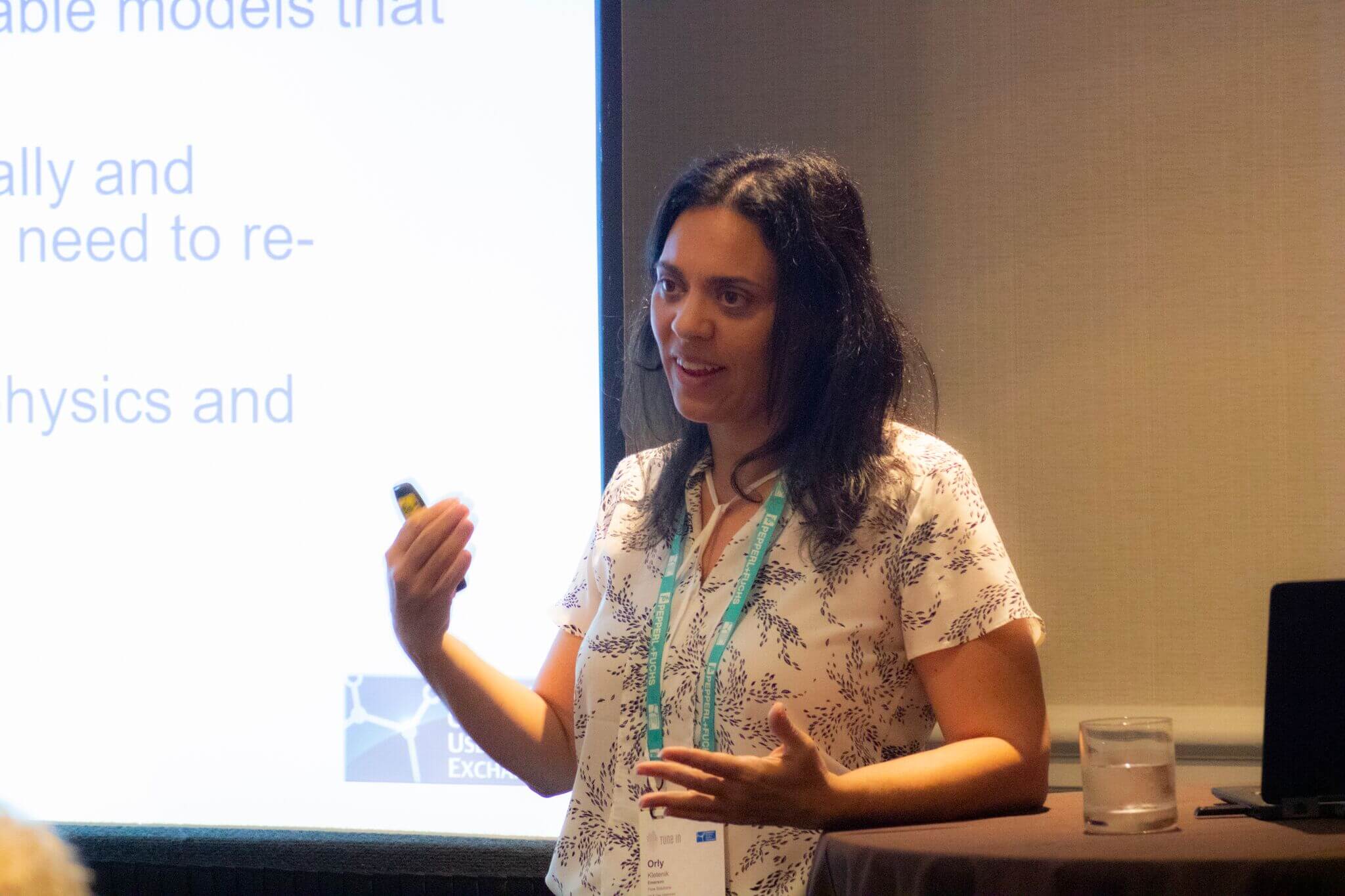 Emerson’s Orly Kletenik presented Reduce Drilling Uncertainty through Rapid Evaluation of Subsurface Scenarios at the 2019 Emerson Exchange conference. Orly opened by noting that exploration seismic data never grows old. It can be used through the life of the geological region.
Emerson’s Orly Kletenik presented Reduce Drilling Uncertainty through Rapid Evaluation of Subsurface Scenarios at the 2019 Emerson Exchange conference. Orly opened by noting that exploration seismic data never grows old. It can be used through the life of the geological region.
Challenges in exploration and development include the uncertainties in processing and imaging, geophysical, geologic, petrophysical and dynamics. Orly shared an example of a difference in velocity impact in the layers of a geological region. The velocity difference in a particular region shows structure of the geological formation to help identify its structure.
More information from additional wells helps improve the subsurface models to continuously approve it. It’s important to provide fully automated integration between geophysics and geology which was included in the Paradigm Geophysical Inversion Solution.
Orly explained Time-Preserving Tomography (TPT) with a discrete structural depth model as an input, inversion through traveltime and obeying geophysical constraints and using the results to update the Tomography residual updates. The result is a kinematically equivalent structural and velocity model.
She shared an example of TPT from the Eagle Ford shale region in South East Texas. The goal was to find a very thin wet gas layer in the formation. Information came from seismic, well markers, well logs and geological knowledge. The initial model gave a general idea where this thin layer was located. The TPT results help provide several models with uncertainty results to help zero in on this layer.
Orly shifted to discussing the combination of geophysical and geological models using a common data repository where the models on each side help to update the other side models. This creates a geological-geophysics automatic feedback loop to improve the quality of the models. Visualization tools are available throughout this workflow.
She explained an uncertainty workflow example with a North Sea oil & gas producer. Their object was to assess the uncertainty of the Hugin Reservoir. The source of this uncertainty was a velocity anomaly in the reservoir zone. The software changes the velocity factors to generate envelopes of uncertainties. Two of the models from these variations were compared against the existing model. The estimates for the production from the reservoir were reduced based upon the comparison of the models. This has significant impact on the decisions on the financial calculations and drilling plans to develop the reservoir.
Orly closed by noting that geophysical inversion is a must as is the connect of geophysics and geological in a common data repository and iterative model. This process used to take days or weeks to do manually for each model and now can be done in minutes with multiple iterations of uncertainty factors applied. This is the only solution to deal with complex geological structures.
